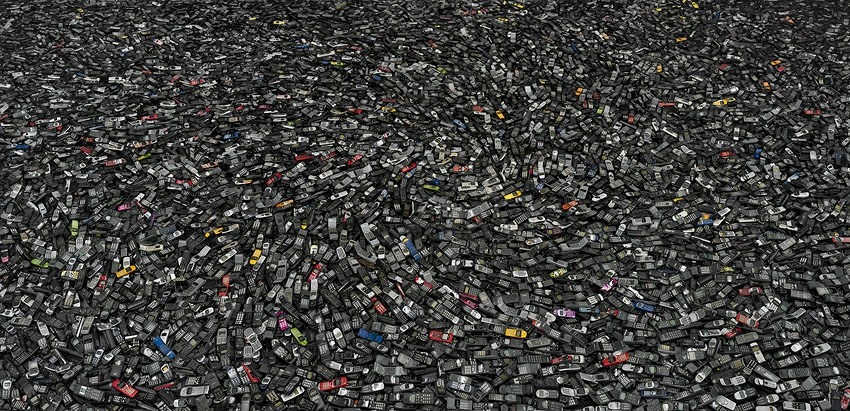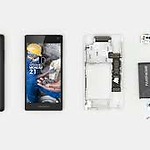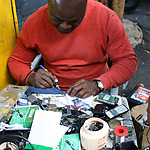In the Netherlands and other Western countries consumerism is business as usual. For many products it is easier and cheaper to replace it by a new product once it breaks down, instead of repairing it (or letting someone else to repair it). Let’s take the mobile phone as an example. In case the phone does not work anymore, it is often hard to repair it by yourself or this is very expensive. So the choice to buy a new phone is often obvious. This is enhanced by the increasing dependence on our phone (agenda, contacts, mobile payment) and that the technology is improving rapidly. Probably this issue also relates to hedonic well-being. According to Venhoeven et al (2013) consumption can bring hedonic well-being, and thus can make the consumer feeling pleasured. On average every two year we buy a new phone, I think this certainly adds to our hedonic well-being. [1]
This is contracting to what happens in developing countries, where also a lot of people use mobile phones on a daily basis. During a project in Madagascar I did see phone repair shops on every corner of the street, characterized by the soldering machine and the pile of phone parts on a small table. Here people take the effort to repair phones, since buying a new one is often too expensive or it is simply unavailable.
I think the western society can learn something from what happens in the developing countries. One can make the phone longer lasting by repairing it. On the one hand this is the customer’s responsibility by making the choice to actually repair the phone. Fortunately there are more people who feel this need; this is why Repair Café was initiated in 2009. Repair Cafés are free meeting places and they’re all about repairing things (together). [2]
On the other hand the responsibility lies by the manufacturer/designers, by making products that are easily repairable. An example of a product that is absolutely not designed for repair is probably one of the most favorite phones: the iPhone. It is not possible to even open up the phone or replace the battery. So the consumer just cannot take responsibility to repair the phone, unless he takes to effort to bring the phone back to the shop and pays a lot of money for it. Differently, a great example is the Fairphone; they are inspired by the bad example of the iPhone. A Fairphone is designed for repair, it is modular and the components can be easily replaced and repaired by the user. This also has an extra benefit, namely that the phone can be easily disassembled at the end of its lifetime and the valuable materials can be re-used or recycled. On top of that, at Fairphone they also make sure that they full production cycle is transparent and fair by putting social values first, starting off with the mining of the materials in the phone. [3][4]
So I think there are a lot of improvements in making a phone a longer lasting product, firstly by choosing a phone that is easy to repair and secondly by take the effort to repair the phone. Verhoeven (2013) mentioned that consuming the pro-environmental alternative could lead to hedonic well-being as well, based on the argument that sustainable consumption means consuming differently rather than consuming less. So instead of purchasing a new phone, the focus could be on purchasing new parts of the phone and repairing the phone. [1]
[1] Verhoeven, L.A., Bolderwijk, J.W. & Steg, L. (2013) Explaining the Paradox: How Pro-Environmental Behaviour can both Thwart and Foster Well-Being. University of Groningen. Sustainability 2013, 5, 1372-1386; doi:10.3390/su5041372.
[2] Repair Café [online] Available from: http://repaircafe.org/
[3] Abel van, B. (2013) Fairphone. TEDx Amsterdam. [online] Available from: http://tedx.amsterdam/talks/fairphone-bas-van-abel-at-tedxamsterdam/
[4] Fairphone [online] Available from: https://www.fairphone.com/



